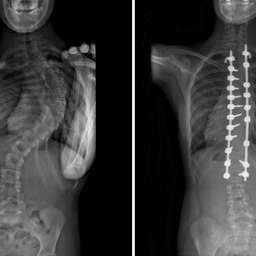A better surgical option when separating fingers fused by soft tissue
Sep 3, 2025
CHOP research demonstrates that a skin graftless technique has a much lower complication rate.
Our team of world-renowned orthopedic surgeons, sports medicine physicians, nurse practitioners, physician assistants, nurses, therapists, athletic trainers and others work together to provide complete and individualized care for your child.
Sep 3, 2025
CHOP research demonstrates that a skin graftless technique has a much lower complication rate.
Jul 25, 2025
Children's Hospital of Philadelphia created Camp Rock to teach adaptive rock climbing skills to children with hand and arm limitations.

Jun 30, 2025
Learn about the benefits of rowing as an accessible, low-impact sport, and how to prevent common rowing-related injuries.

Apr 9, 2025
A scoliosis diagnosis can leave parents with a lot of questions. Learn essential scoliosis facts parents and caregivers should know about this common, treatable condition.
Mar 25, 2025
Dr. Sankar addresses common questions about infant hip dysplasia, when to request an ultrasound, bracing options and when surgery is needed.
Feb 19, 2025
Staff from CHOP’s Orthopedic Center published widely in 2024; this is a sampling of some of their groundbreaking research.
Feb 19, 2025
CHOP study explores how trochlear development affects skeletally immature patients.
Feb 19, 2025
CHOP researchers study fixation techniques for avulsion factures of ischial tuberosity.
Feb 10, 2025
Treating infants with complex developmental dysplasia of the hip (DDH) requires the best diagnostic tools, a full range of brace options and when needed, complex surgery.
Feb 5, 2025
Researchers at Children’s Hospital of Philadelphia (CHOP) demonstrated how trochlear anatomy evolves during pediatric development with and without recurrent patellofemoral instability (PFI), a condition where the kneecap repeatedly slips out of its groove, causing pain, swelling and difficulty with physical activity. The findings, recently reported in a landmark study in the American Journal of Sports Medicine, highlighted that PFI in growing children worsens trochlear dysplasia, which can result in further kneecap instability, while those without PFI experienced natural improvements.